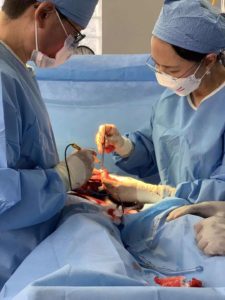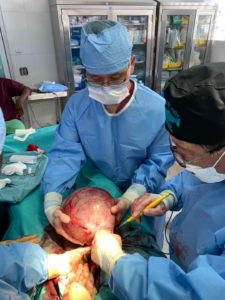 Filarial hydroceles are much more difficult to excise surgically than idiopathic hydroceles because of edematous tissue, scarring and fibrosis. The complete excision of entire tunica vaginalis is important to avoid hydrocele recurrence.
Filarial hydroceles are much more difficult to excise surgically than idiopathic hydroceles because of edematous tissue, scarring and fibrosis. The complete excision of entire tunica vaginalis is important to avoid hydrocele recurrence.
Based on Capuano ‘s clinical classification of filarial hydrocele , stage I or II hydrocele, associated with grade 0 or 1 penis burial, could be considered a simple hydrocele; A stage III or IV hydrocele associated with grade 2, 3 or 4 penis burial could be considered a complicated hydrocele. The complicated hydrocele usually requires a longer, more demanding operation with more intra-operative bleeding and could pose a higher risk for complications.
Epididymectomy and Orchiectomy may need to be performed with hydrocelectomy together in some large cases of hydrocele.
Wound healing is slow and complicated in patients with filariasis because of the tissue lymphedema and chronic scarring. Patients who require excision of the scrotal skin (scrotoplasty) are at higher risk for bleeding and wound infection.
Antibiotics should be initiated the night prior to surgery and continue for about 5 days. The patients should be given the analgesics with nonsteroidal anti-inflammatory drugs or acetaminophen.
Patients with large filarial hydroceles are usually observed for 24-48 hours. Patients should return for a follow-up visit within 7 days.



